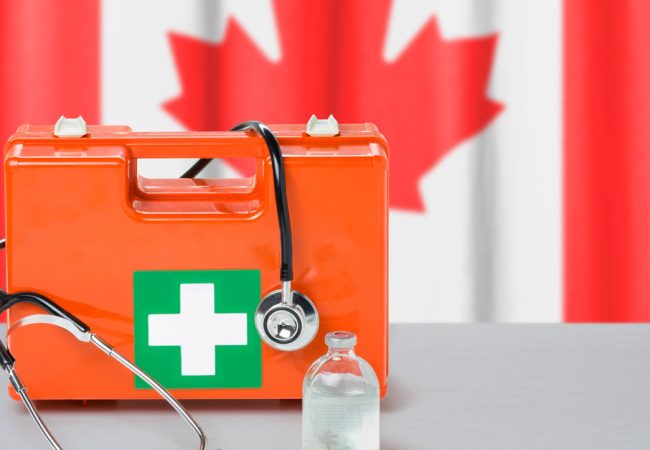New Data Shows 3.2 Million Canadians on Waitlists

- Latest government data obtained by SecondStreet.org shows that 3.2 million Canadians are waiting for surgery, a diagnostic scan, or to see a specialist
- The true total is likely 3.8 million after making cautious estimates for missing data
CALGARY, AB: Today, think tank SecondStreet.org updated its CanadaWaits.ca website with the latest government data on the number of Canadians who are waiting for surgery, a diagnostic scan or appointment with a specialist. Government data obtained largely through Freedom of Information (FOI) requests shows 3.2 million Canadians are waiting for the three types of health services.
However, the data provided by governments is incomplete as most provinces do not have estimates on the number of patients waiting to see a specialist. Further, some don’t know how many patients are waiting for diagnostic scans. Using cautious estimates to fill in these gaps, SecondStreet.org estimates the true number of patients who are waiting for the three services to be 3.8 million.
“Behind these statistics are countless stories of patients suffering,” said SecondStreet.org President Colin Craig. “Health care spending has exploded over the past three decades yet waiting lists continue to get worse. Keeping the public health care system, but reforming it to more closely match European models could help improve services for patients.”
The following table shows the most up to date figures by province. Scanned FOIs and data sources can be viewed at CanadaWaits.ca.
Province | Surgery | Specialist | Diagnostic | Percent of population waiting for surgery** | Date |
88,804 | – | – | 1.7% | June 13, 2022 | |
75,483 | 175,849 | 93,737 | 1.7% | Dec 5, 2022 | |
34,316 | – | 19,327 | 2.9% | Sep 30/Oct 19 | |
8,905 | – | 56,296 | 0.6%* | Nov 2022 | |
206,000 | – | 496,261 | 1.4% | Jan 16/ Dec 1 | |
160,684 | 793,658 | 707,454 | 1.8% | Nov 2, 2022 | |
27,249 | – | – | 3.4% | May 4, 2022 | |
14,485 | – | 74,984 | 2.8% | Sep 30 – Nov 30, 2022 | |
26,246 | 28,171 | 82,834 | 2.6% | June 24, 2022 | |
– | – | – | – | July 6, 2022 | |
729 | 2,602 | 2,288 | 1.7% | Dec 8, 2022 | |
872 | 9,989 | 443 | 1.9% | Nov 30 – Jan 17 | |
1,297 | 5,018 | 0 | 3.2% | Dec 8, 2022 | |
TOTALS: | 645,070 | 1,015,287 | 1,533,624 |
| |
|
| Grand Total: | 3,193,981 |
*A January 16 news release from the Ontario government suggested that the total surgical waitlist is at 206,000. However, a freedom of information response from Ontario Health received by SecondStreet.org showed a surgical waitlist of 220,349 as of December 1, 2022.
Some trends in the updated date include:
- Ontario has seen the number of patients waiting for surgery decline. In a news release, the provincial government reported that 206,000 patients are on surgical waitlists. This is down from 229,423 in June of 2022. The number of patients waiting for a diagnostic scan went up significantly, from 460,153 to 496,261.
- Alberta saw a significant drop in the number of patients waiting for diagnostic scans – from 108,782 in May to 93,737 in December. In terms of surgeries, Alberta saw a slight increase – from 75,274 to 75,483.
- Manitoba saw minor changes in the number of patients on waitlists. For surgeries, the number dropped slightly from 9,010 to 8,905. Conversely, patients waiting for diagnostic scans rose from 55,718 to 56,296.
- Saskatchewan also saw relatively minor changes. The number of patients waiting for surgeries dropped from 35,969 to 34,316, while those waiting for diagnostic scans went down from 20,618 to 19,327.
- Newfoundland and Labrador saw an increase in the number of patients waiting for diagnostic scans from 51,646 to 74,984 and a decrease in the number of patients waiting for surgery from 18,363 to 14,485.
SecondStreet.org routinely updates the total number of patients on waitlists at CanadaWaits.ca. There, you can also find data on the number of Canadians who died on a waiting list, government spending on health care, and average wait times.
You can help us continue to research and tell stories about this issue by making a donation or sharing this content with your friends. Be sure to sign up for our updates too!


